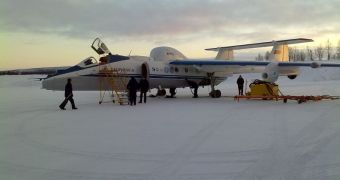Gathering detailed data about the planet's upper atmosphere could be extremely useful for a variety of fields, ranging from studying climate change to tracking down pollution and even particle physics. However, doing so is fairly difficult, given that platforms needed to get scientific instruments to the required altitudes are very rare. This is why the European Space Agency (ESA) is conducting the Earth Explorer program missions. One of the candidate proposals for the seventh instance of the program is called PREMIER, and recent practical tests have proven it to be highly-feasible.
PREMIER stands for Process Exploration through Measurement of Infrared and millimeter-wave Emitted Radiation, and its main trait is that it features a high-altitude aircraft, capable of carrying scientific instruments to suitable heights for conducting accurate observations. The main goal of the mission is to provide experts with additional, more thorough insight into how the chemistry of the atmosphere and the Earth's climate are intertwined. The maiden flight of a PREMIER aircraft has just concluded, and engineers and scientists managing it are very pleased with the preliminary results.
The two main instruments on the mission, that have been built specifically for this proposal, operate in the infrared and microwave wavelength ranges of the electromagnetic spectrum, respectively, and they appear to be performing wonderfully. The primary tool is called Millimeter-wave Airborne Receivers for Spectroscopic Characterization in Atmospheric Limb Sounding, or Marschals. It was developed by engineers and physicists at the United Kingdom-based Rutherford Appleton Laboratory (RAL), and it was the first of the two instruments to fly on the PREMIER high-altitude plane, an M-55 Geophysica aircraft. The machine can go as high as 21 kilometers above the surface of the planet.
“Marschals is the first limb sounder to be explicitly designed and built for the purpose of sounding the composition of the upper troposphere and lower stratosphere. A particular attribute of millimeter-wave measurements is their comparative insensitivity to ice clouds,” explains Rutherford Appleton Laboratory expert Brian Moyna. He adds that the instrument is perfectly suited for analyzing and making sense of the interactions that occur between trace amount of gases, radiation and other elements, at the very boundary between the upper troposphere and lower stratosphere. An additional suite of other processes, that previous missions failed to observe, could also be evidenced by PREMIER.

 14 DAY TRIAL //
14 DAY TRIAL //